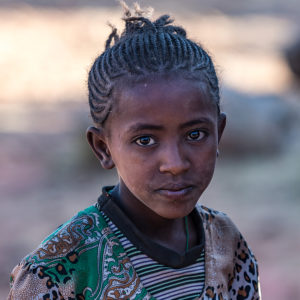Young women and adolescent girls have become an incredible force for progress in the pursuit of free and fair societies, particularly in sub-Saharan Africa.
They are raising their voices to protest against police brutality in Nigeria, to end gender-based violence in Namibia, and to support democracy and human rights in Uganda. When empowered, educated, and healthy, adolescent girls and young women are able to meaningfully contribute to accelerated progress for all, protecting human dignity and demanding accountability from governments and private-sector institutions.
Sadly, the climb to succeed is exceptionally steep for adolescent girls and young women because of a lack of recognition oftheir agency and rights; inadequate access to healthcare, education, and skills training; and restrictive and patriarchal gender norms. Unless things change, gender inequality will further upend opportunity at local and global levels.
Almost 11 million young people will join the workforce in sub-Saharan Africa each year for the next decade, according to World Bank estimates. They have the potential to dramatically promote growth and reduce poverty, and the region has some of the highest rates of female entrepreneurship and workforce participation in the world.
It’s time to level the playing field.
Adolescent girls and young women in sub-Saharan Africa don’t lack ability or potential; the international community failed them.
We overlooked a key period in the female lifecycle – adolescence and young adulthood – while the world focused on critical maternal care and under-5 mortality.
We built systems that are inaccessible to them like clinics structured around the needs of moms and babies that barred teenagers and young women from accessing confidential and comprehensive services.
We neglected to consider that girls need safe and private facilities and hygiene products to manage monthly periods when we built schools and increased access to education.
We failed to ensure that justice systems fully protect their rights and agency while advocating on issues like early marriage and gender-based violence.
The COVID-19 pandemic has compounded these challenges.
Millions of girls won’t return to school when it is safe to do so, reversing years of hard-fought efforts toward gender parity in education. Gender-based violence – already an immense problem – is also increasing. Teenage pregnancy rates are rising, and more HIV cases are expected.
“The economic impact of COVID-19 on low- and middle-income countries will disproportionally impact women and girls,” putting them at “unique and additional risk” for both HIV and tuberculosis, requiring a “dramatic” increase in funding, according to a statement from the U.S. President’s Emergency Plan for AIDS Relief.
Most worrying, the COVID-19 pandemic has reversed progress in reducing global poverty rates: The United Nations estimates that 32 million Africans will drop below the international poverty line because of the global health emergency, and women and girls will be acutely affected.
But it doesn’t have to be this way.
In seeking a brighter future for all, one of the greatest investments we can make is in young women and adolescent girls in sub-Saharan Africa.
Equipping them with the education, access, and resources needed to effectively contribute to their economies advances both communities and countries at large.
Providing pathways for girls to lead improves stability and peace everywhere. Engaging them at decision-making tables ignites ingenuity, inclusion, and innovation.
Most importantly, recognizing their lived experience and supporting and protecting their agency demonstrates our commitment to human dignity and the value of every individual in the pursuit of stability and prosperity.
For this to happen, we must act now.
We must work to build more inclusive partnerships and make bold investments in holistic programs that fully consider structural, cultural, and policy factors that hold girls back.
Equally vital is women and girls’ representation in decision-making and their access to comprehensive information and services. It’s critical to gather data to pinpoint where we have failed and what works. Unfortunately, adolescent girls are often overlooked, and we don’t have disaggregated data on 80% of the indicators for global gender equality goals, Citi’s 2020 analysis shows.
There is an African proverb that states, where you will sit when you are old shows where you stood in youth. Today and tomorrow, the status and well-being of adolescent girls and young women matters. The key to our future is female.

